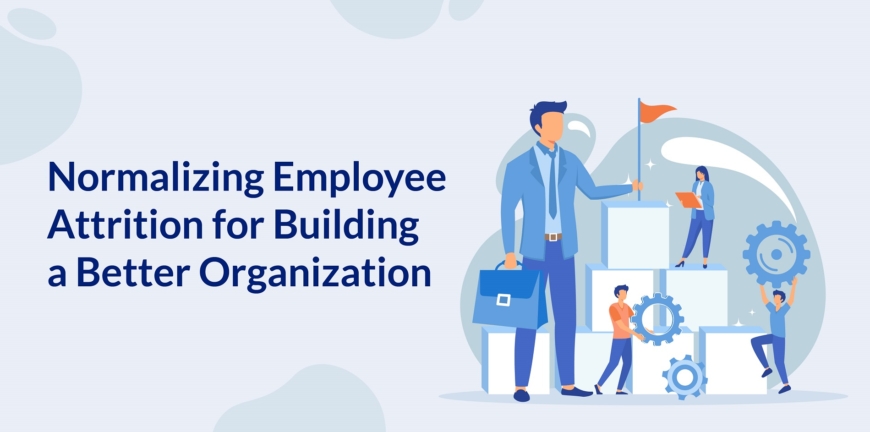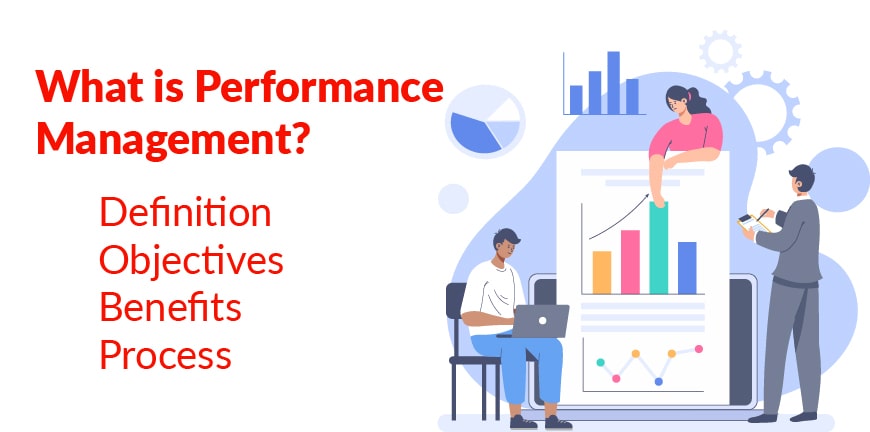
Data-Driven Recruitment: What It Is and How to Use It for Hiring Success
11/04/2023
How Can an RPO (Recruitment Process Outsourcing) Enhance your Hiring Capabilities?
22/05/2023Retention of employees has always been looked at as one of the topmost priorities of the HR department. Companies want to keep attrition rates low at all costs. This is more the now after the Great Resignation trend that gripped companies globally.
From an employer’s point of view, an employee leaving is never a desirable trait, as higher attrition rates reflect poorly on the company’s culture and reputation. While this may be true, employee attrition is not always bad for the health of a company, especially if done right, that is, if the attrition is planned.
But before we discuss planned attrition, let us first understand how attrition happens in organizations.
What is Employee Attrition?
Employee attrition is a process that follows the exit of an employee from a company due to unpredictable reasons that are uncalled for, and the position is left open without any replacement. Reasons for an employee exiting a company could be anything- health issues, voluntary retirement, relocation due to family demands etc.
There are several types of employee attritions-
Voluntary Attrition
An employee leaves a company on their own accord due to numerous factors such as health issues or more suitable work opportunities etc.
Internal Attrition
It is a scenario where an employee quits a position with a particular employer for a different role with the same employer. This is a form of positive attrition, as the employee develops various skills and knowledge, which can be profitable for the employer.
Involuntary Attrition
The employer decides to lay off an employee or part ways with them. It happens due to company downsizing, cost control, recruitment freezes etc. It sometimes occurs on accord of low or poor employee performance.
Is Employee Attrition Good or Bad?
Employee attrition often has a negative connotation, reflecting poorly on a company’s image. Moving on, is employee attrition always wrong? What is the big deal about employee attrition?
Let us talk about how employee attrition is sometimes good for a company.
Advantages of Planned Employee Attrition
When a company undergoes financial strife, retaining employees feels burdensome, especially when there is no immediate need for those extra hands and their contribution to the company is menial.
Attrition can be a good move depending on the prevailing conditions of an organisation. It is especially favourable when the low-performing employees leave. Under certain circumstances, attrition helps organizations hire better talent and build a more robust workforce.
Just to be clear, we are talking about planned attrition here.
Planned attrition is a pre-planned course of action to reduce the number of employees in an institution over time. One fine example of where this plan of action works in favour of the employer is in schools. While the applications pour in, some students are eager to get into your school.
From the moment they apply, you know their tenure will be finite, and it is supposed to be that way. Some students stay for longer periods, and most leave once their course is completed. This is seen in a positive light as the cycle benefits the school.
But most businesses do not operate quite that way. When an employee is interviewed and onboarded, you assume that the employee will stay with you indefinitely. Of course, both sides are unsure about the term, as it depends on several factors for both parties, although the average tenure of a modern-day worker is 4 years. But this rarely happens. The exiting of an employee is never pretty, and it comes with a certain awkwardness, as neither party has prepared for the moment.
Although, some employers have taken to the idea of planned attrition, also known as the up-and-out system. Companies like McKinsey are known for their planned attritions. They are transparent and honest about it right from their onboarding stage and still manage to produce Alumni who have only good things to say about them after exiting.
This concept creates a moving process. People come, give their best, get hired for better positions at larger companies, or leave on good terms. A few of them return after years of experience to enhance their ex-company’s capabilities. Positive reviews from alumni are one of the biggest wins for a company.
Normalizing Employee Attrition
Employees leaving a firm is never easy to digest, and it stings. How can you reduce this effect? Create a culture where you do not avenge or penalise employees who leave. It instigates a positive impact on your brand.
Your Aim should be to make your company a place where people come to learn and grow. To achieve this, you must set up an up-and-out system.
How Can You Reduce Employee Attrition?
Here are a few steps to give you a kickstart.
-
By being a career accelerator and acknowledging there is no forever
Being a career accelerator means having an obligation to help your employees gain better opportunities pushing their careers forward.
The question is- how is this going to help you? Let us elaborate.
Understand that it is a trade-off. You want your employees to perform exceptionally well and want to understand the concept of no-ghosting in an event where they would like to quit or tender a resignation. This helps create an environment where employees start feeling comfortable about being honest.
Chief people officer of McKinsey Katy George once said, “Grow skills or go.” McKinsey is one of the very few companies known to diligently invest in their employee’s career growth, which is the reason every big company, be it Google, Amazon, or Apple, never fails to take a second look at Mckinsey alumni resumes.
Put some heart into investing in resources to provide your employees with suitable training, mentoring, and apprenticeships. You will enrich them with valuable life skills and lessons that can be a fantastic addition to their existing skills but, most importantly, can be put to action immediately.
By providing them with the necessary tools and aids, you only help them unlock their true potential and value quickly but offer them learning experiences that they will forever cherish. Another essential thing to remember is to keep an open mindset meaning always make assets and knowledge libraries available even after their exit. It is a sure-shot way of building your reputation based on value and support.
There is a high possibility that you may go beyond just learning the skills to make a difference in your current role but hone it so well that you can help set your company up for success in the future.
-
Promoting from within the institution
Not everyone wants to leave a company within a year or two of joining. Some would desire to keep going for another few years. As an employer, you need to move people up or across the company landscape to help them expand their knowledge horizon.
You can build a solid foundation when you understand the importance of acknowledging impressive growth among employees. Promoting from within or sometimes rehiring former employees who have upskilled and have gained valuable experience is a great move.
Encouraging internal applications without making them feel guilty for wanting to switch to other teams, instead, celebrating these moves, will help reap the advantages of attrition
This internal talent flow in your company helps new hires realise your brand’s potential that they can use as leverage for their long-term success.
-
Staying connected with your ex-employees
An employee is often forgotten by his employer once he leaves the company. We have all heard of the term “gated community” and know how they function. The same concept needs to be applied when it comes to your employees.
Facilitate a platform where all your employees- current or ex can connect and share news, ideas etc., whilst having privileged access to some of the resources too. Keep your people engaged. Remember, employee engagement is the key to a company’s productivity.
Another significant point to regard is that your alumni are the only people associated with your organization who previously guaranteed its growth graph. They are instrumental in making you acknowledge how the outside world perceives your brand.
A Final Word
Understand that employee attrition is not just necessary but is also beneficial to companies under certain conditions, and it’s high time we normalized planned attritions and rid the negative connotations around the word attrition.
Taking this novel approach to facilitate attrition is easier said than done. It takes a lot of faith to go about this strategically from the get-go. But once you implement it right, you will see the transformation yourself and the benefits of learning to say goodbye when necessary.
Contact Us For Business Enquiry

Rajkumar Shanmugam
Rajkumar Shanmugam is the Head of HR at ALP Consulting, bringing over 19 years of comprehensive HR leadership experience across India and international markets. His expertise spans talent acquisition, employee relations, performance management, compliance, and HR transformation. Rajkumar has a proven track record of driving people-centric initiatives, enhancing workplace culture, and aligning HR strategy with business goals. With extensive experience in US staffing operations and global mobility, he continues to lead organizational excellence through innovation and employee engagement.




